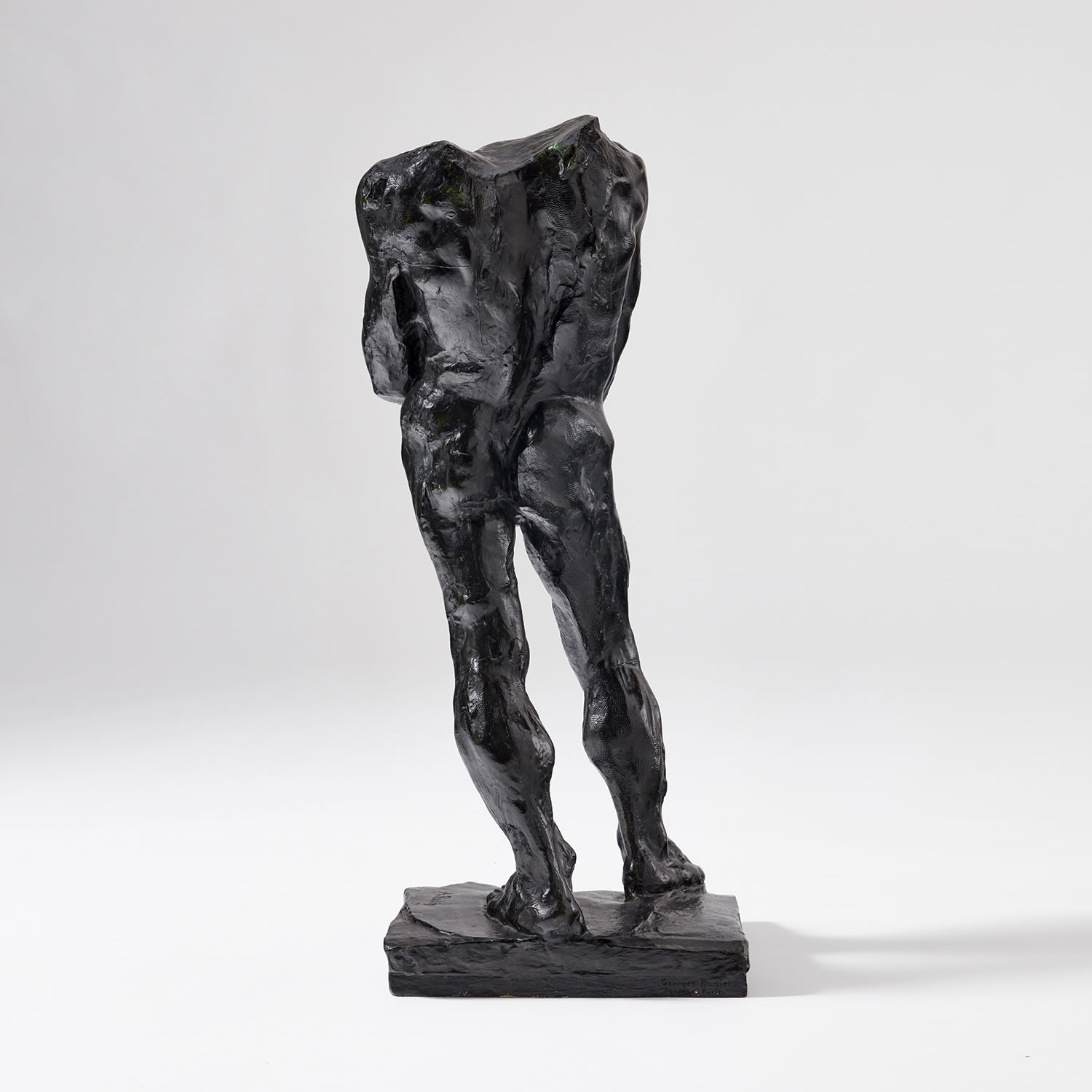





重要日本私人收藏
125Ο
奧古斯特·羅丹
《波薩,F型裸體研究,亦為「運動員研究」》
款識:A Rodin N° 4(人像左腳)A. Rodin(底部)© by.musée Rodin.1971(底部右下方)
鈴印:鑄造廠 Georges Rudier. / .Fondeur.Paris(底部右方)
鈴印:鑄造廠 Georges Rudier. / .Fondeur.Paris(底部右方)
銅雕
36 7/8 x 16 x 14 3/8 英吋 (93.7 x 40.6 x 36.5 公分)
1896年構思,1971年4月鑄造,共有約12版為巴黎羅丹美術館而製、10版在1967-1982年間於巴黎 Georges Rudier 鑄造廠鑄造,此作為巴黎 Georges Rudier 鑄造廠版,將被納入由 Brame & Lorenceau 畫廊籌備及 Jérôme Le Blay 編纂的《奧古斯特.羅丹雕塑作品重要目錄》,編號2021-6487B。
此版本的其他鑄品被多家機構納入永久館藏,包括:帕勞阿圖史丹福大學康托藝術中心 (1/8); 紐約現代美術館 (2/8); 紐約布魯克林美術館 (7/8); 紐卡素地區美術館 (8/8); 巴黎羅丹美術館 (0/8)。
此版本的其他鑄品被多家機構納入永久館藏,包括:帕勞阿圖史丹福大學康托藝術中心 (1/8); 紐約現代美術館 (2/8); 紐約布魯克林美術館 (7/8); 紐卡素地區美術館 (8/8); 巴黎羅丹美術館 (0/8)。